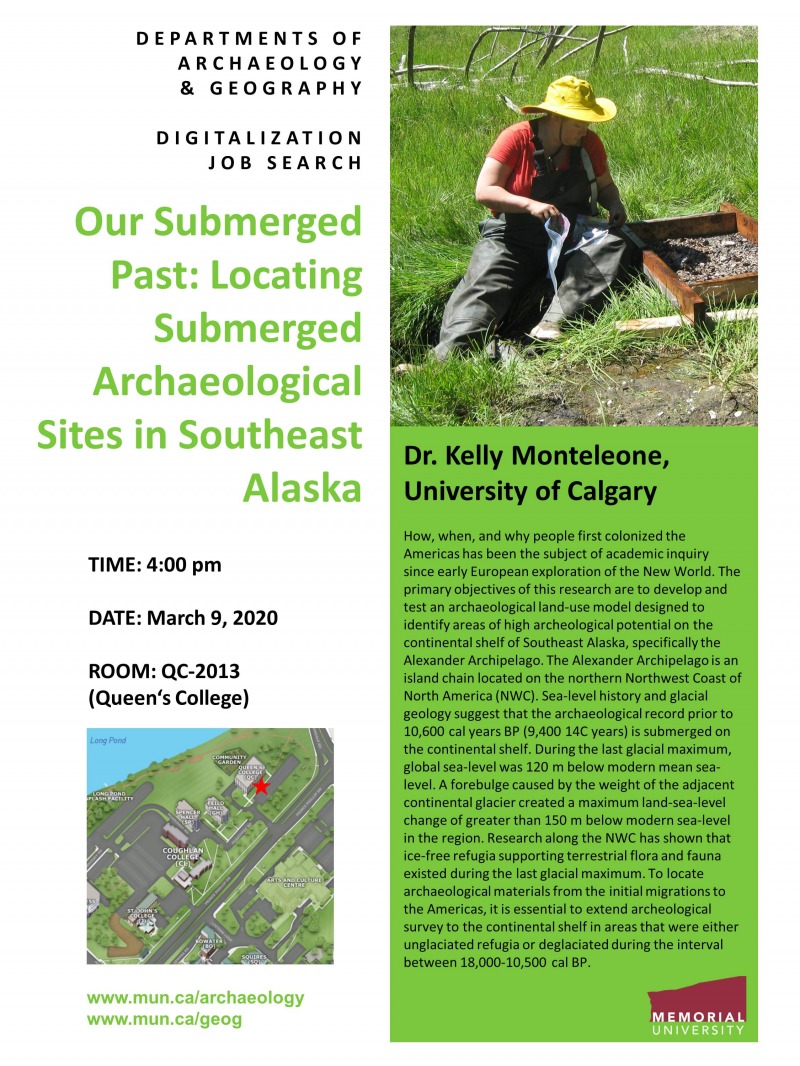Joint Tenure-Track position, Assistant Professor, Archaeology and Geography: Job Talk by Dr. Kelly Monteleone, 9 March 2020

As part of the Digitalization Job Search for a joint tenure-track Assistant Professor position, the Departments of Archaeology and Geography are pleased to host a presentation by candidate Dr. Kelly Monteleone from the University of Calgary titled "Our Submerged Past: Locating Submerged Archaeological Sites in Southeast Alaska."
Dr. Monteleone will be presenting at 4pm on 9 March in Queen's College QC-2013.
Dr. Monteleone's research applies human-environmental dynamics on the continental shelf of North America to investigate human adaptations to environmental change concentrating on the late Pleistocene and early Holocene. On a global scale, Dr. Monteleone is interested in the peopling of the Americas and in this endeavour employs Geographic Information Systems, marine geophysics, environmental reconstruction, quantitative methods, spatial analytics, and settlement pattern modeling using historical ecology and human behavioral ecology.
As Dr. Monteleone explains: "How, when, and why people first colonized the Americas has been the subject of academic inquiry since early European exploration of the New World. The primary objectives of this research are to develop and test an archaeological land-use model designed to identify areas of high archeological potential on the continental shelf of Southeast Alaska, specifically the Alexander Archipelago. The Alexander Archipelago is an island chain located on the northern Northwest Coast of North America (NWC). Sea-level history and glacial geology suggest that the archaeological record prior to 10,600 cal years BP (9,400 14C years) is submerged on the continental shelf. During the last glacial maximum, global sea-level was 120 m below modern mean sea-level. A forebulge caused by the weight of the adjacent continental glacier created a maximum land-sea-level change of greater than 150 m below modern sea-level in the region. Research along the NWC has shown that ice-free refugia supporting terrestrial flora and fauna existed during the last glacial maximum. To locate archaeological materials from the initial migrations to the Americas, it is essential to extend archeological survey to the continental shelf in areas that were either unglaciated refugia or deglaciated during the interval between 18,000-10,500 cal BP."